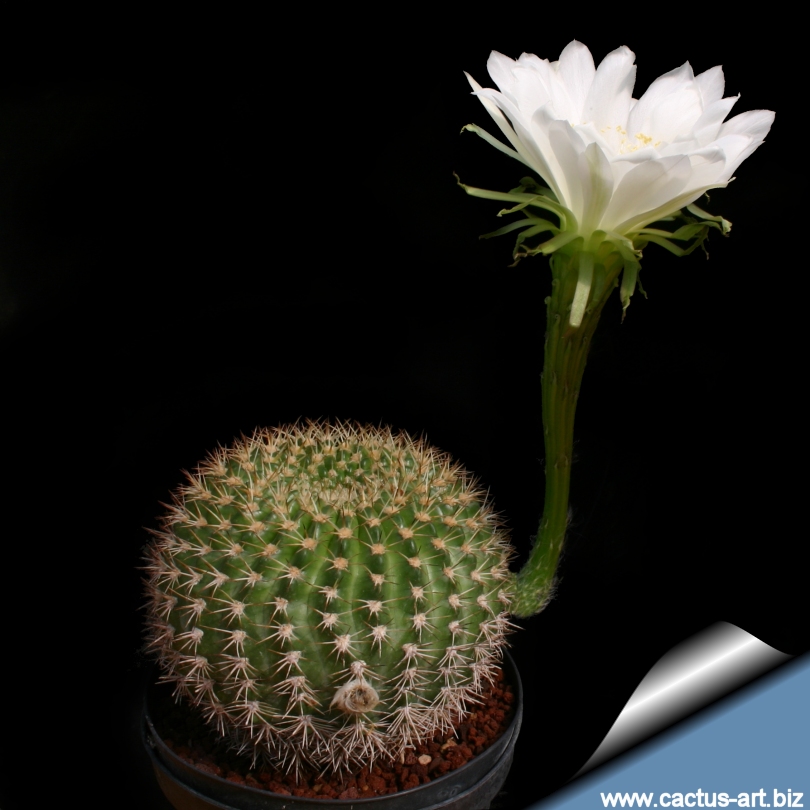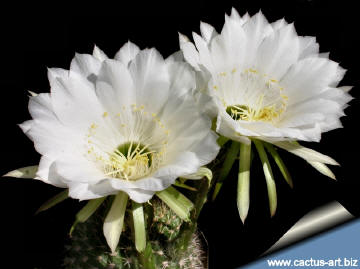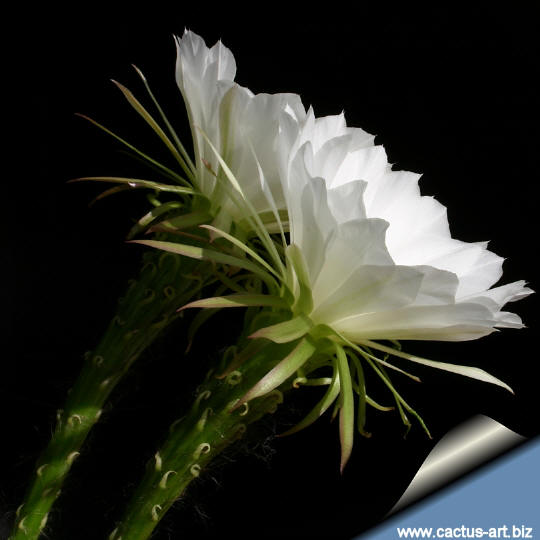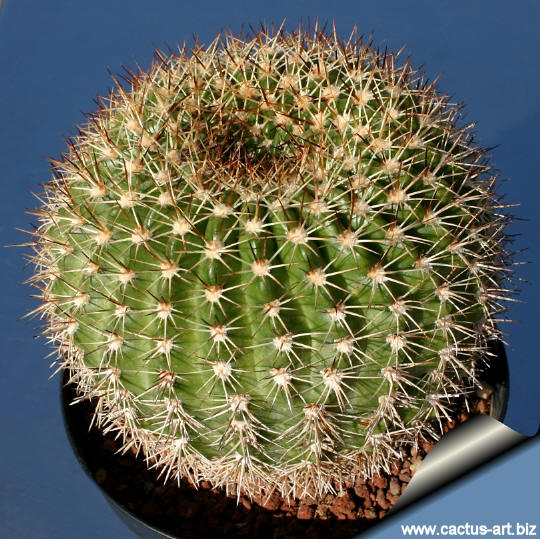|
|
|

Echinopsis mammillosa
form an attractive large-growing fresh green body with relatively short
spines.
The flowers of are truly beautiful.
|
|
 |
Description:
Solitary spherical to columnar cactus, 10-25cm in diameter and 7-30 cm
tall or more, depending on the variety. There are a number of varieties
that differ with flower color, dimension and spination.
Stem: Large and globular, with many ribs divided into low rounded
tubercles.
Flowers: Up to 20 cm long, 10 cm wide. Typically the species has
white nocturnal flowers to attract moth pollinators.
Large, but the
flowers may be white with rose colored tips, purple or deep red. The
flowers of this species are characterized by relatively short floral
tube scales and unusual seeds.
Blooming season: This species will produce flowers in the summer
when only 8 cm in diameter. The blossoms open at night and last about 24
hours. |
| |
- The subspecies 'silvatica' sometimes reaches 30cm high, and the
majority of spines are straight.
- The subspecies 'mamillosa' only reaches about 7 cm inches high, and
has slightly curved spines.
- The 'kermesina' variety has deep red to purple flowers, and is used
often in hybridization.
This species (and particularly the carmine flowered variety kermesina)
is often used in hybridization, and is an important component of some
modern
Echinopsis hybrids, lending its large showy flower structure to these
hybrids.
|
| Cultivation: The Easter Lily
Cactus is a summer grower
species that offers no cultivation difficulties.
Water regularly in summer (but do not overwater ).
It needs
good drainage and very porous soil.
Keep rather dry in winter.
Feed with a high
potassium fertilizer in summer. It is quite frost resistant if kept dry (hardy to -10° C). It needs a bright exposure, full sun
or half shade in summer.
Propagation: Direct sow after last frost, or
offsets if any.
Photo of conspecific taxa, varieties, forms and
cultivars of plants belonging to the
Echinopsis mamillosa
complex
(This
Taxon
has lots of synonyms whit several controversial varieties and subspecies
and comprises a multitude of different forms, but where each form
is linked to others by populations of plants with intermediate
characteristics):
|
|


Advertising
|
|
|
|
|
Family:
Cactaceae (Cactus
Family)
Scientific Name: Echinopsis mammillosa
Gürke 1907
Origin: Tarija, Bolivia
Conservation status: Listed in
CITES appendix 2.
Common Names:
|
Synonyms:
- Echinopsis ritteri Boedeker 1932
- Echinopsis mamillosa var. kermesina (Krainz) Krainz
- Echinopsis mamillosa ssp. sylvatica (Ritter) Braun &
Esteves
- Pseudolobivia kermesina Krainz 1942
- Echinopsis kermesina (Krainz) Krainz 1961
|
|
|
|

The feature that seems to distinguish E. mammillosa from other
Echinopsis plants is the succulent, claw-like bracts on the flower tube
that in some clones are curled like pig's tails. |
 |
|